Since 2003 the Office of Rail Transport has been collecting the most important data on rail transport in Poland. Thanks to these data, it is possible to see the most important parameters of the market in a broader perspective, dating back to before the restructuring of the railway sector in Poland. The main reform was splitting of the incumbent PKP company and the separation of the functions of infrastructure manager and rail operator. In 2003 there were also fewer passenger and freight carriers.
The last 20 years of the rail sector in Poland have brought major changes to the market, although these have not always had direct impact on transport volumes. The number of rail passengers in Poland from 2003 to 2016 fluctuated around 260-290 million, never exceeding the 300 million passenger threshold. This threshold was only exceeded in 2017. In 2019 passenger numbers reached 335.9 million passengers, followed by a large drop to 209.4 million passengers in 2020 due to the pandemic. In the following year, 2021, the market slowly recovered from the crisis, with passenger numbers reaching 245.1 million. It was not until 2022 that passenger traffic returned to its pre-pandemic upward trend, with results higher than in 2019. It reached 342.2 million passengers carried, the highest result in the last 20 years.
Figure 1. Number of rail passengers in Poland in the years (in millions)
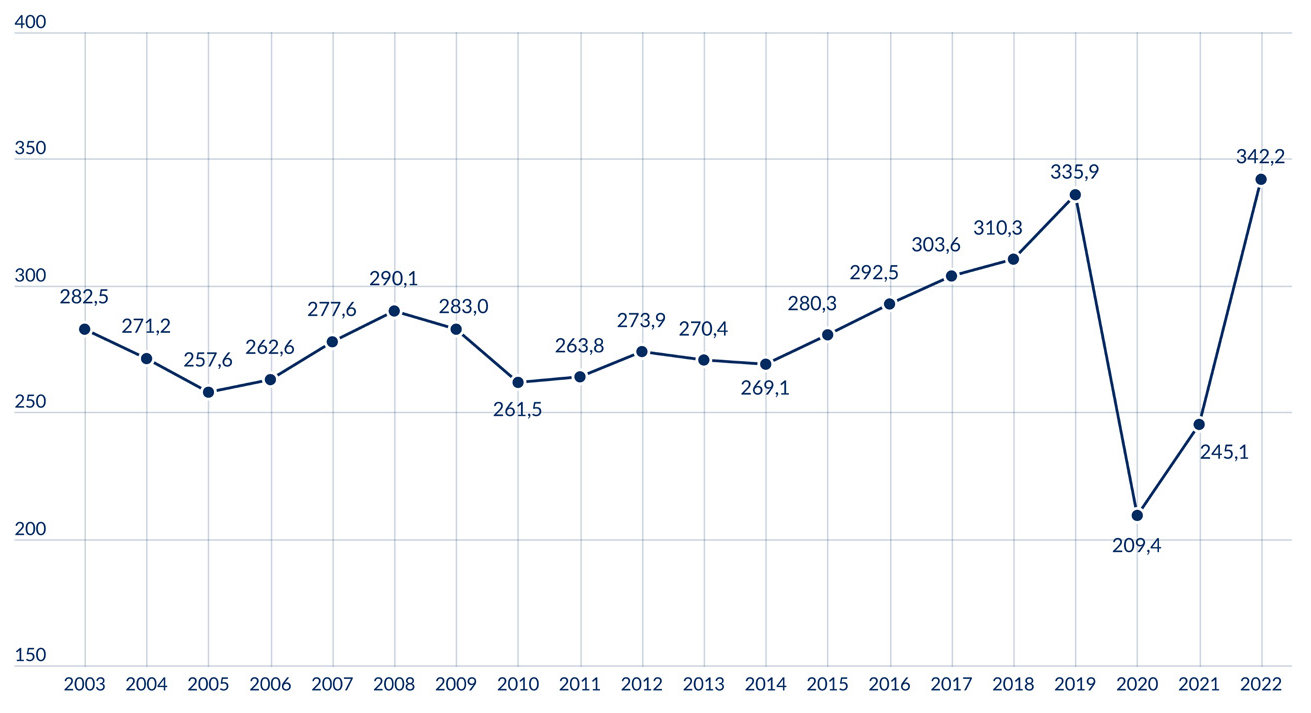
The record-breaking popularity of rail transport in 2022 relative to the last 20 years was also visible in the highest rail passenger transport usage rate at that time, which refers to the number of journeys per 1 resident of Poland.
Figure 2. Rail passenger transport usage rate during 2003-2022 (number of journeys per 1 Polish resident)
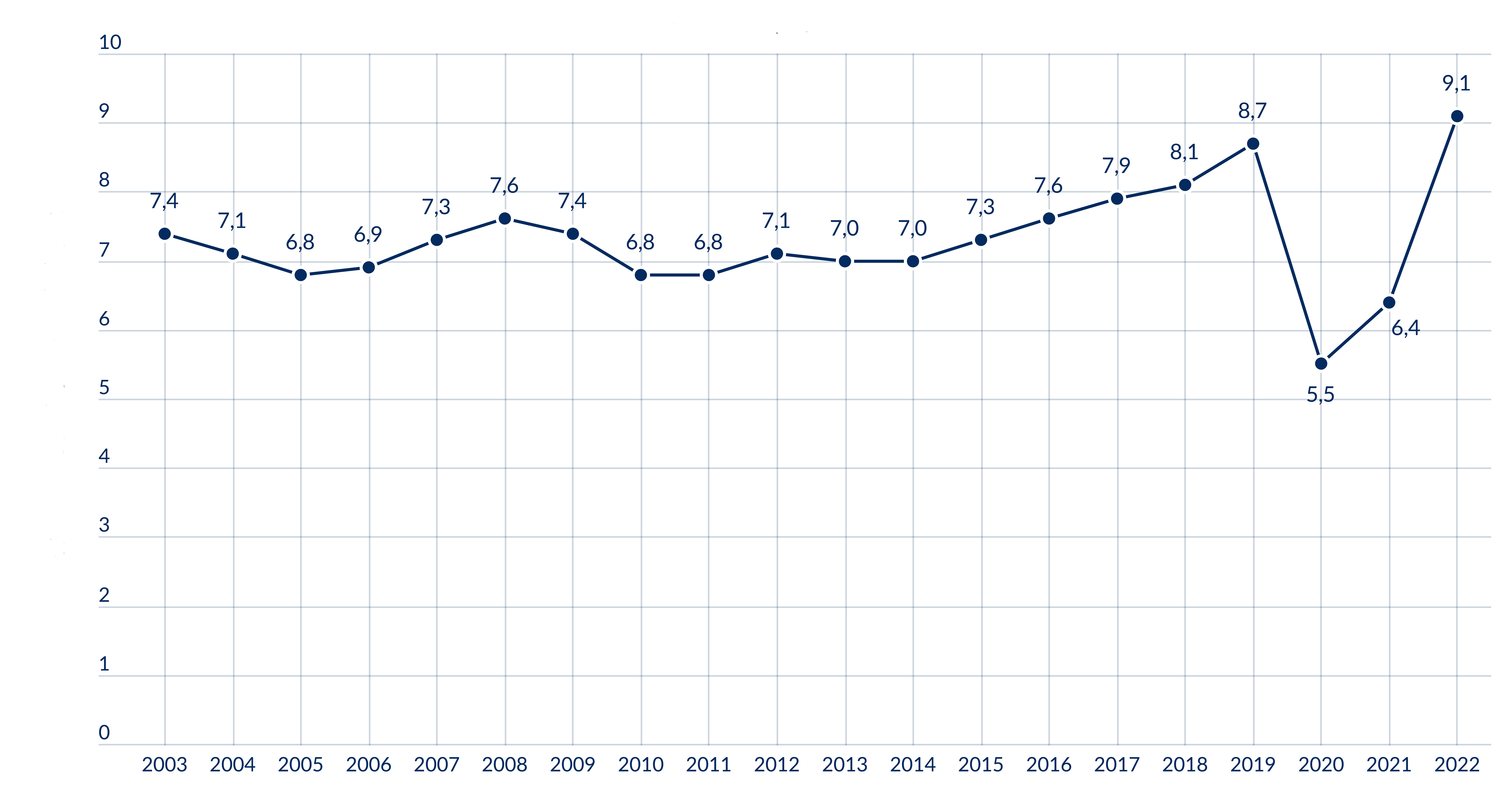
Over the past 20 years, the weight of goods transported by rail has decreased, although the value of the transport performance, for which there is an upward trend, has increased. The weight of rail freight transported reached its highest value in 2007, when 293.0 million tonnes of goods were transported by rail. In the following years there was a drop in the parameter with slight increases in 2010 and in 2018. In contrast, the transport performance reached its highest level in the last 20 years just in 2022.
Figure 3. Total weight of goods in rail freight from 2003 to 2022 (million tonnes)
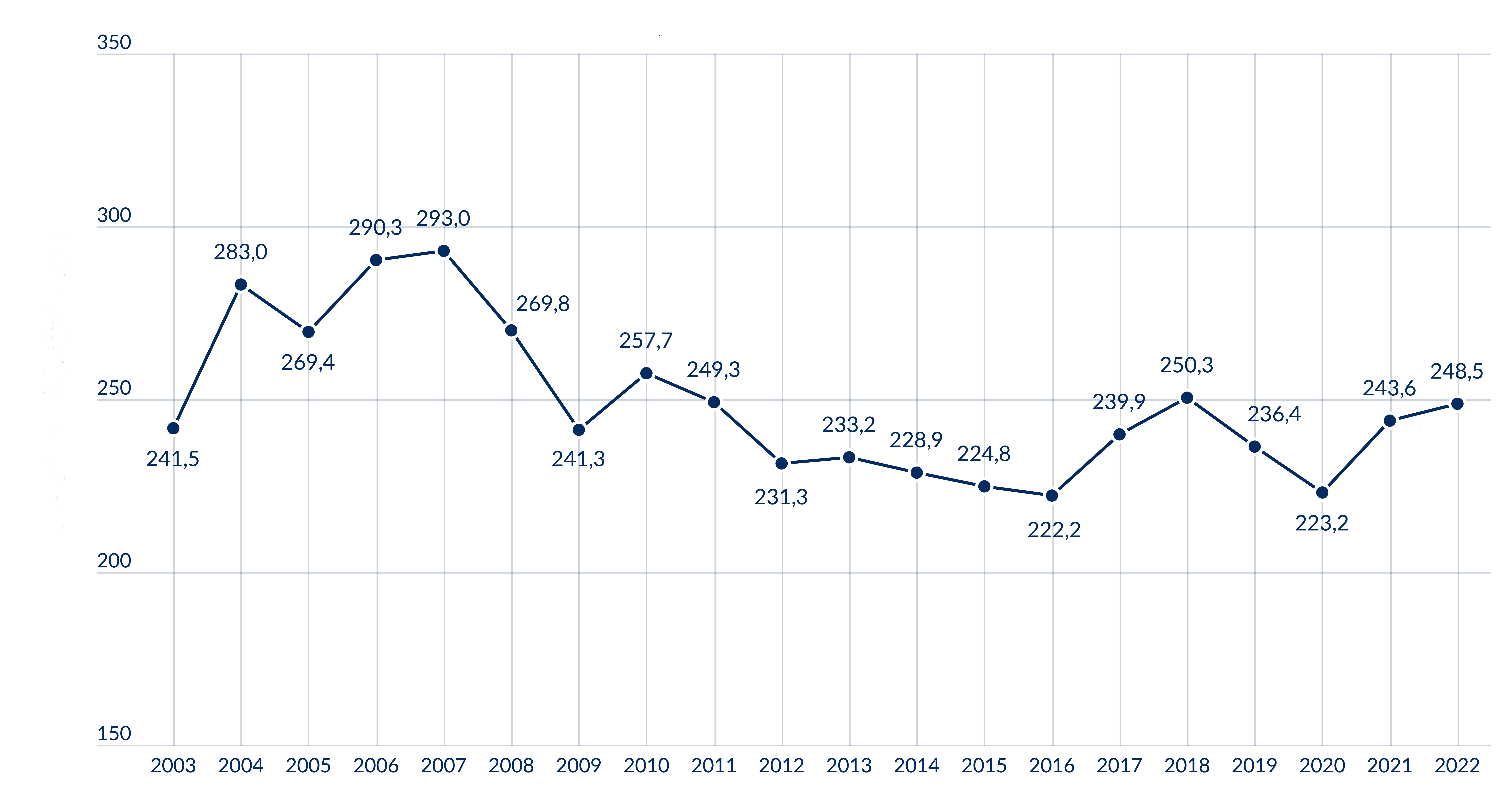
Figure 4. The transport performance in rail freight from 2003 to 2023 (billion tonne-km)
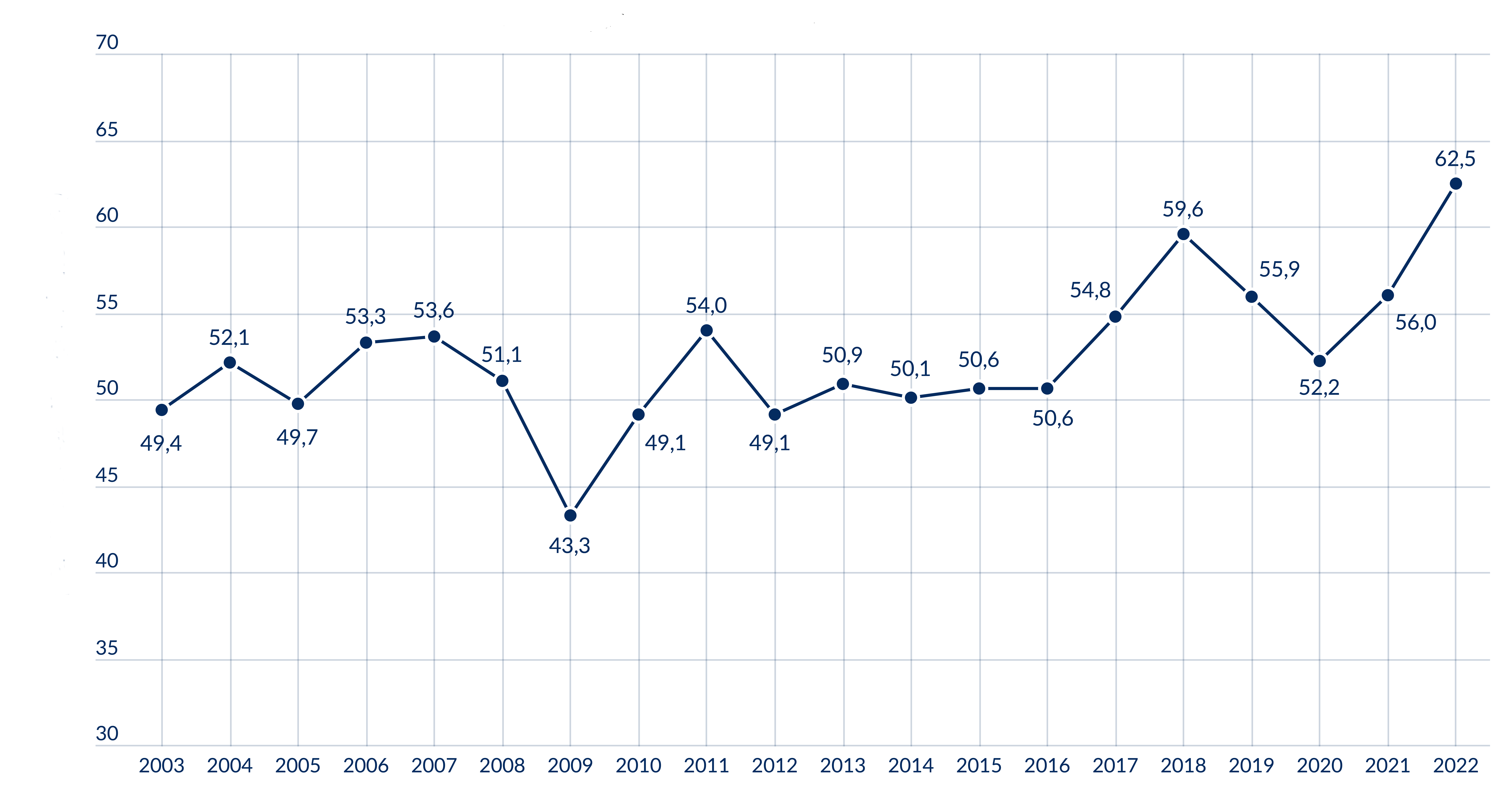
Over the 20 years of our statistics, the number of passenger and diesel locomotives, electric and diesel railcars and electric and diesel multiple units has changed. The changes in the state of wagons at the disposal of passenger carriers are interesting. The number of coaches with seats has fallen by about half in 20 years and the number of double-decker coaches with seats has fallen from 897 in 2003 to 74 in 2022. Declines were also visible in the number of dining cars, coaches with reclining seats and sleeping cars.
Figure 5. Number of coaches with seats at the disposal of passenger operators between 2003 and 2022
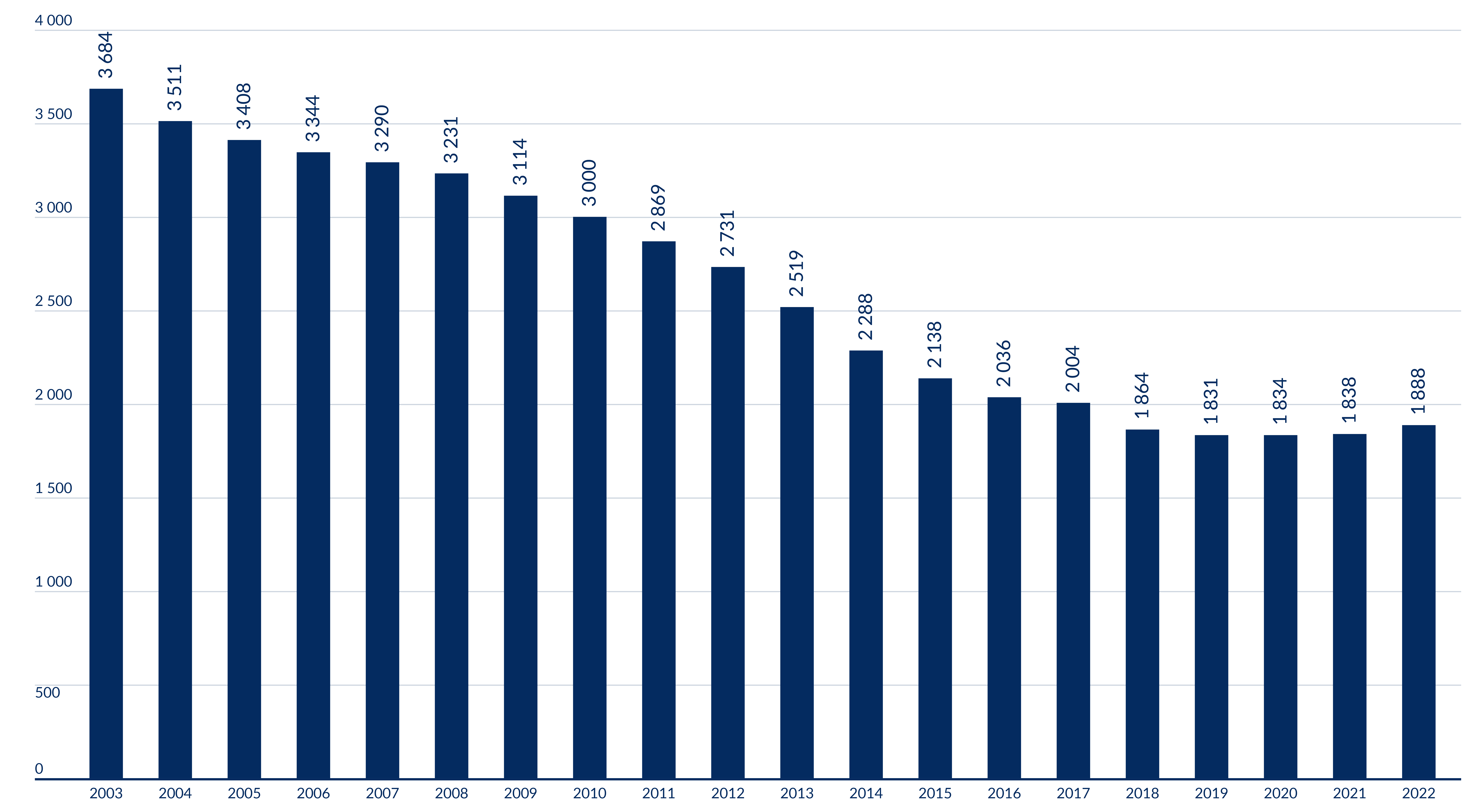
Rail passenger carriers’ employment levels increased slightly and in 2022 were only slightly higher than in 2003. The number of employees in rail freight operators declined steadily, almost annually, starting from a level of 55,000 in 2003 to 26,500 in 2022. Infrastructure managers had a similar decline in employment.
Figure 6. Employment in the passenger transport sector between 2013 and 2022
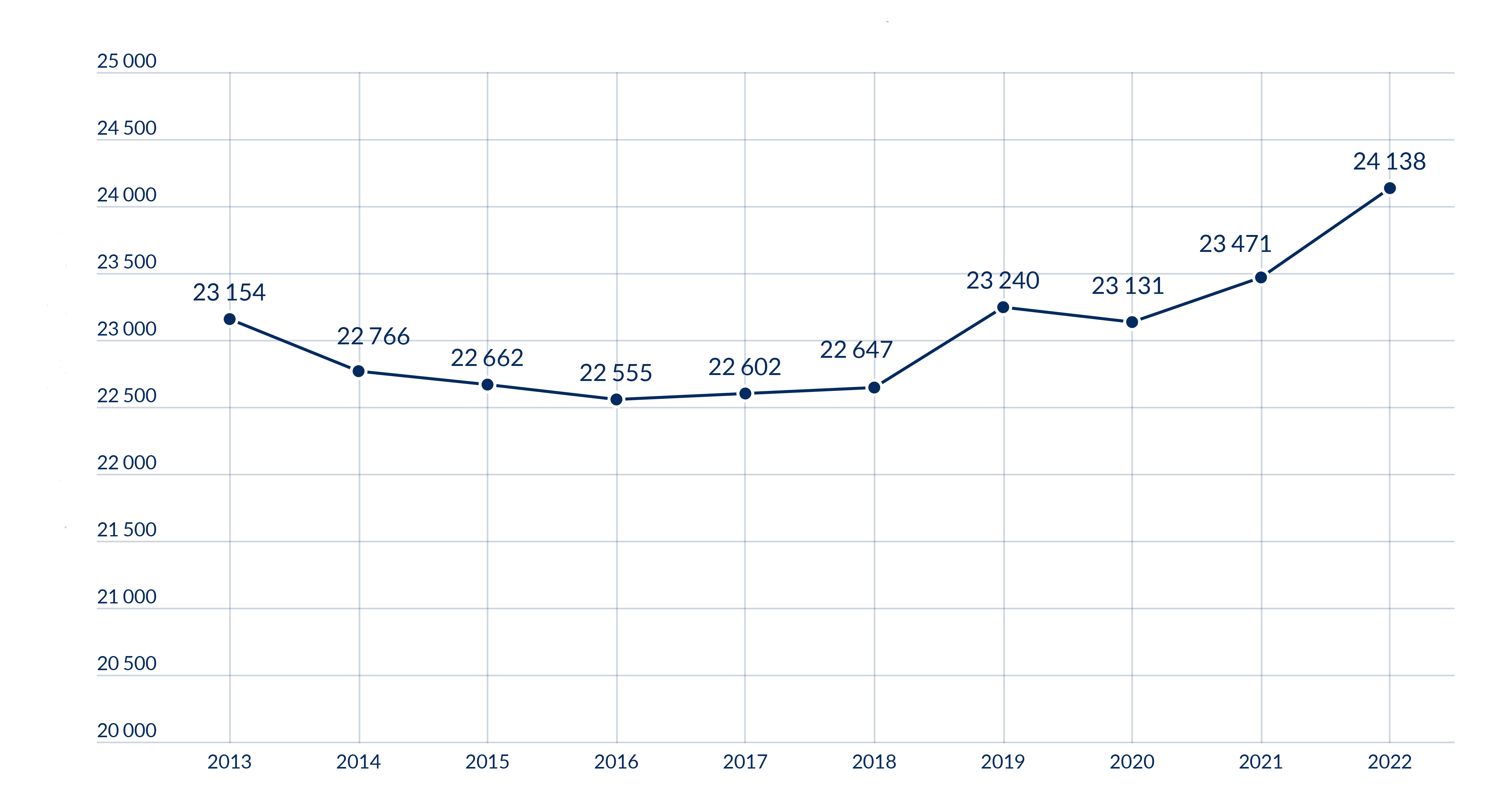
For a full summary of the 20-year statistics collected by the Office of Rail Transport, see Chapter 7 of our Report on the operation of the rail transport market in 2022.